2.1. Describing deafness
The child’s deafness can be described based on their hearing levels. These can be explained in more detail using information related to the type of deafness, the level of hearing (measured in decibels [dB]), and the frequencies (measured in hertz [Hz]) that the child can hear. The following sections explain these in more detail.
Types of deafness
Conductive
Conductive deafness occurs when sound cannot pass through the outer and/or middle ear to reach the cochlea and continue along the auditory nerve. This can be caused by a variety of conditions and can be temporary or permanent. This type of deafness may be managed with hearing aids or grommets.
Sensori-neural
This type of deafness occurs when the hair cells inside the cochlea are not working correctly, or when sound cannot travel along the auditory nerve effectively. This type of deafness is permanent and may worsen, depending on the cause. Sensori-neural deafness may be managed with hearing aids or cochlear implants (CIs), according to hearing thresholds.
Mixed
A combination of both sensori-neural and conductive deafness is known as mixed deafness.
Descriptors for levels of deafness (decibels)
The level at which a child can hear the different frequencies used in assessing deafness are measured in dB. These levels are referred to as audiometric descriptors by the British Society of Audiology (BSA) and are used by BATOD.
The following explanation for the audiometric descriptors is taken from the BSA’s latest document in relation to pure-tone audiometry. This document can be found here
Audiometric descriptors (BSA, 2018)
“The hearing threshold levels of an individual ear are often described in general terms rather than in terms of the actual numbers at different frequencies on a pure-tone audiogram. Recommendations are made below to associate particular descriptors with bands of average .
Four audiometric descriptors are given. These are based on the average of the pure-tone air conduction (AC) hearing threshold levels at 250, 500, 1,000, 2,000 and 4,000 Hz. Averages do not imply any particular configuration of hearing loss and do not exclude additional terms (eg profound high-frequency hearing loss) being used.
Descriptor average hearing threshold levels (dB HL)
- Mild hearing loss: 21–40
- Moderate hearing loss: 41–70
- Severe hearing loss: 71–95
- Profound hearing loss: in excess of 95
For the purposes of this document, in determining the five-frequency average value of the hearing loss, if at any frequency no response is obtained due to the severity of the loss, this reading shall be given a value of 130 dB HL.
Anomalies may occur in calculating the average hearing loss if an audiometer with insufficient output is used in the measurement of severe and profound hearing losses.
Note:
While audiometric descriptors may provide a useful summary of an individual’s hearing thresholds, they shall not be used as the sole determinant for the provision of hearing support. The ability to detect pure tones using earphones in a quiet environment is not in itself a reliable indicator of hearing disability, and audiometric descriptors alone shall not be used as the measure of difficulty experienced with communication in background noise, the primary complaint of individuals with hearing loss.”
Considerations for QToDs
- The above note included in the BSA document is very important for QToDs to keep in mind.
- When calculating the overall hearing level of a child with bilateral hearing loss to give a single word descriptor of hearing level, the average thresholds (at 250, 500, 1000, 2000, and 4000Hz) of the better ear only are used. An example of when this simplified description may be needed is when completing a NatSIP Eligibility Framework form.
Frequency (Hertz) of deafness levels
Levels of deafness are measured at specific frequencies by the child’s audiology department. The audiologist will follow the recommended procedure mentioned previously as set out in the latest BSA (2018) document.
During a hearing test, frequencies ranging from 250 to 8,000 Hz are checked. However, for younger children, the number of frequencies tested may be reduced based on their age and abilities. They will typically be tested for 500, 1,000, 2,000, 4,000 Hz and 8,000 Hz, with additional intermediate frequencies of 750, 1,500, 3,000, and 6,000 Hz if necessary and practical. For older children with high-frequency deafness who use hearing technologies, 3,000 and 6,000 Hz are commonly included in the test.
Professionals in deaf education often use the terms low, mid, and high-frequency deafness, which are crucial to comprehend as they impact the ability to understand speech sounds. Here is a breakdown of the frequencies associated with these terms.
- Low frequencies: this refers to 500 Hz and below. On the audiogram, this will include 250 and 500 Hz.
- Mid frequencies: this refers to sounds between 500 and 2,000 Hz. On the audiogram, this mainly refers to 1,000 Hz and can include 750 and 1,500 Hz if these have been tested.
- High frequencies: this refers to sounds that occur at 2,000Hz and above. On the audiogram, this will include 2,000, 3,000, 4,000, 6,000 and 8,000 Hz.
Example audiograms
Sensorineural deafness
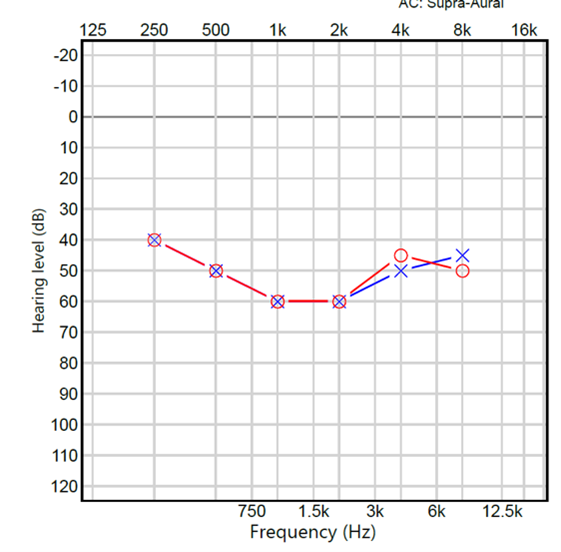
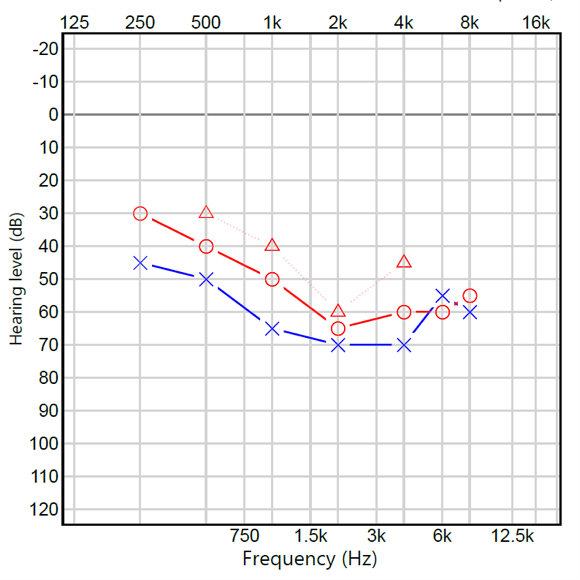
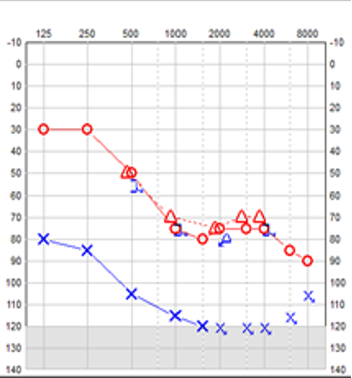
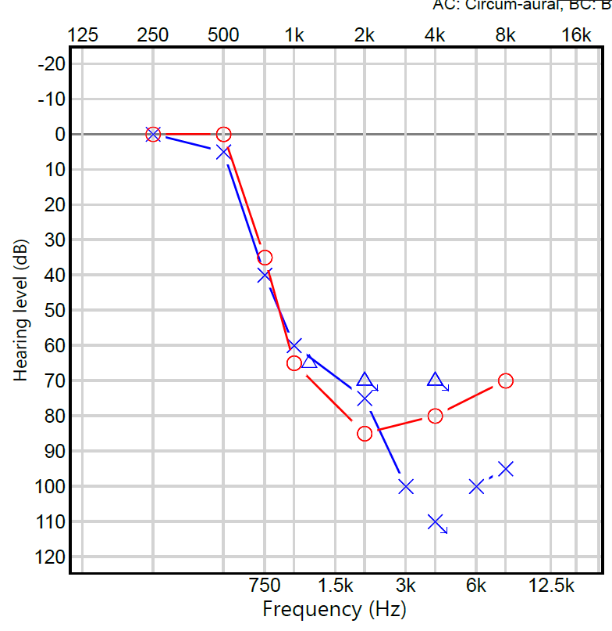
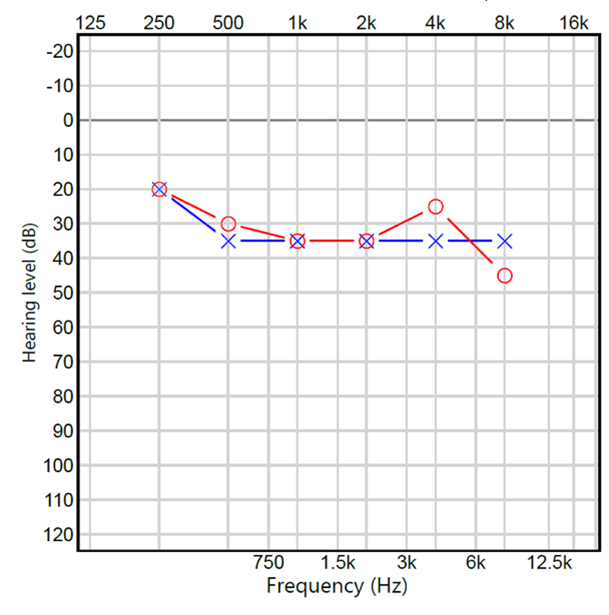
The following audiograms have been included to gain a better understanding of the types, descriptors, and frequency of deafness.
Example audiograms of a conductive deafness:
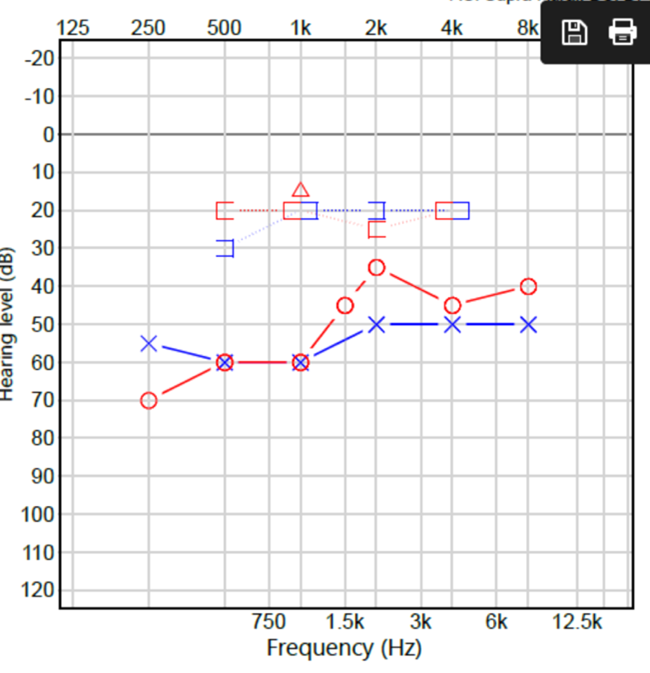
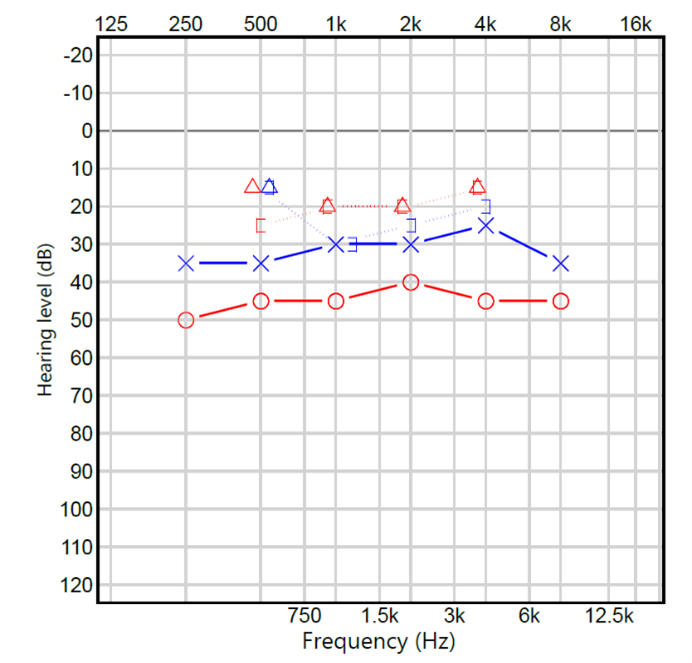
Example audiogram of an asymmetrical deafness:
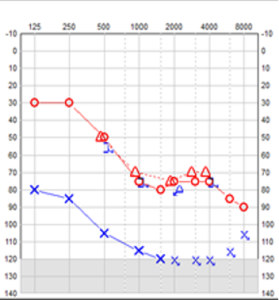
Example audiograms of mixed deafness:
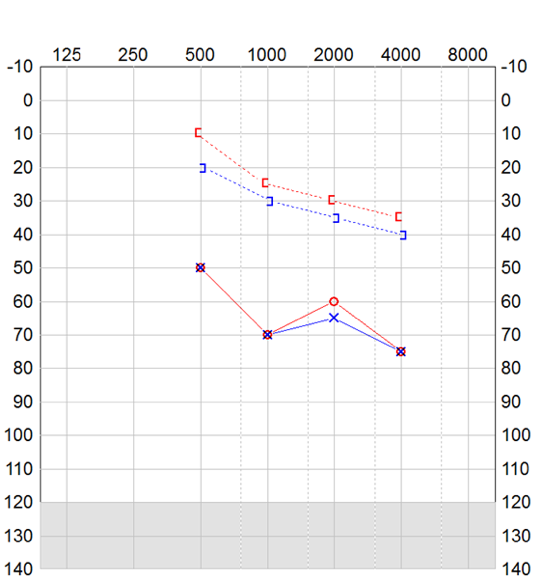
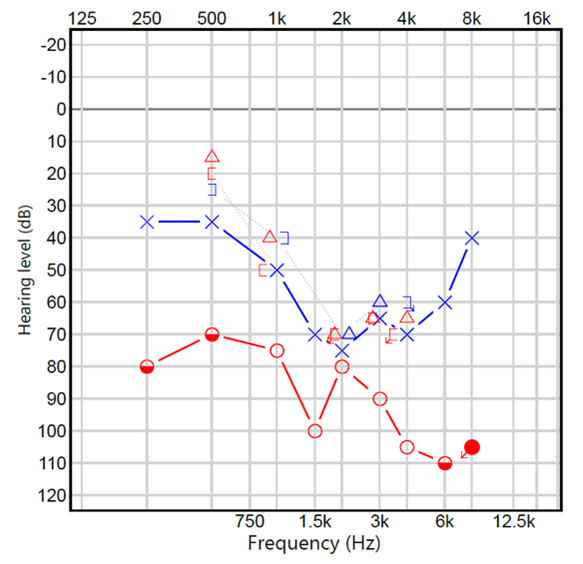
Example audiogram of unilateral deafness (microtia in one ear):
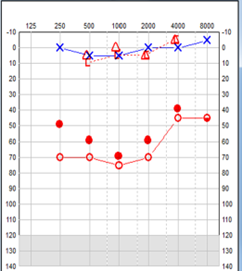
Next pages in section 2
Other sections
- Section 1 Anatomy and physiology of the ear
- Section 3 Auditory perception and hearing testing
- Section 4 Acoustics and physics of sound
- Section 5 Listening skills and functional hearing
- Section 6 Hearing technologies




